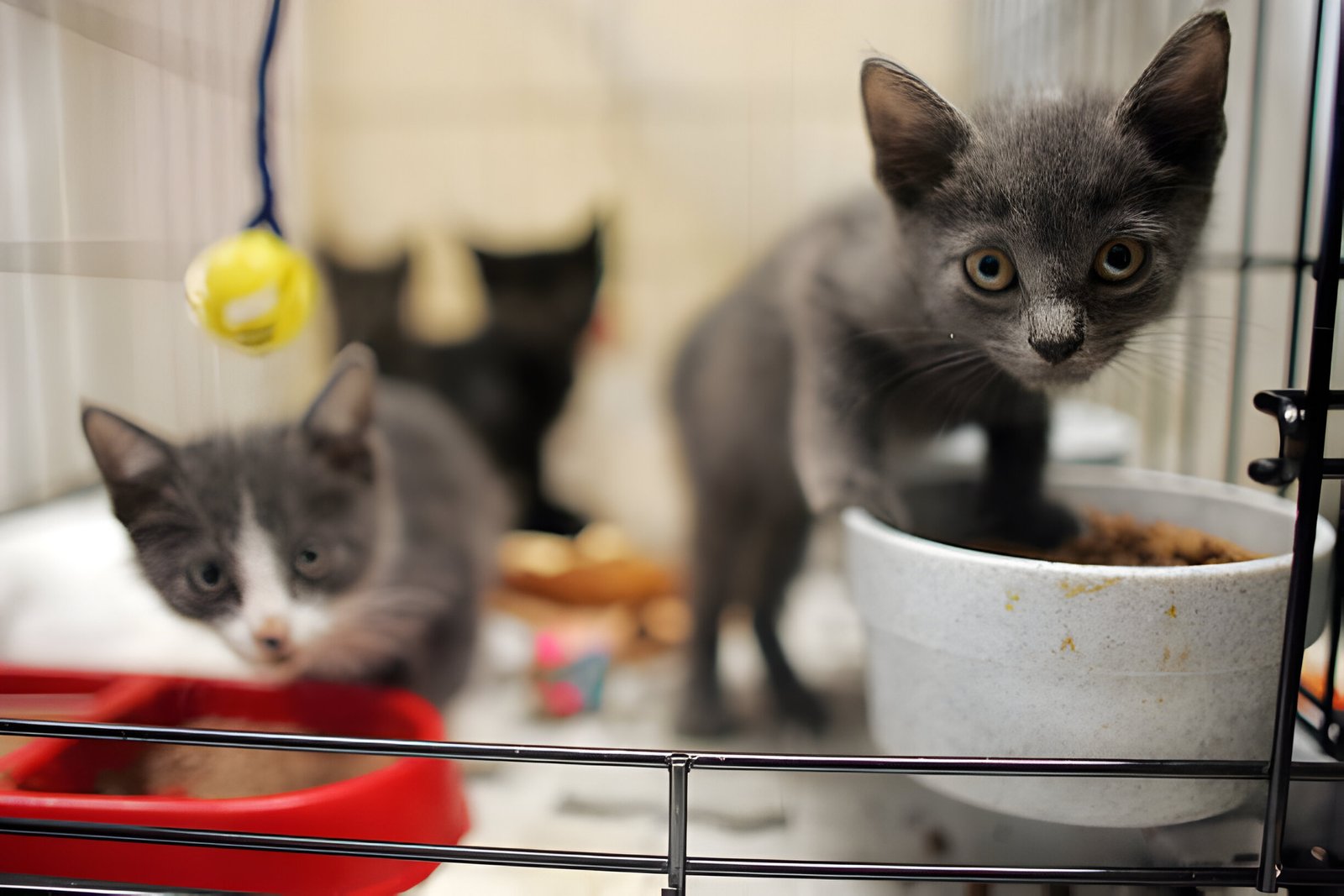Image Credits : gettyimage
Bringing home a new kitten can be an exciting and heartwarming experience. For those looking to find free kittens near them, the search can be both rewarding and challenging. While many people dream of having a furry companion, the process of locating and adopting a kitten requires careful consideration and planning. From local animal shelters to online networks like Petfinder, there are numerous resources available to help potential cat owners find their perfect feline friend.
Before embarking on the journey to adopt a free kitten, it’s crucial to understand the responsibilities that come with pet ownership. This guide will explore various places to look for free kittens, highlight important factors to consider before adoption, and provide tips on preparing a home for a new kitten. Whether someone is a first-time cat owner or adding to their existing pet family, this comprehensive resource aims to help them navigate the process of finding and welcoming a new best friend into their life.
Where to Look for Free Kittens
Local Animal Shelters
Animal shelters often have a variety of cats and kittens available for adoption. These shelters provide a safe environment for animals in need of homes. While many shelters charge adoption fees, some may offer free or low-cost adoptions during special events or promotions.
Online Adoption Platforms
Online platforms have become popular resources for finding pets, including free kittens. Websites like Petfinder connect potential adopters with over 14,500 shelters and rescues. These platforms allow users to browse available pets and learn more about caring for their new companions. PetRehomer, a digital platform, links potential adopters with people who need to rehome their pets, offering a non-judgmental service and helping to reduce the number of animals going into shelters.
Community Bulletin Boards
Local community bulletin boards, both physical and online, can be valuable sources for finding free kittens. These boards often feature postings from individuals or local organizations looking to rehome kittens. Checking these resources regularly can increase the chances of finding a kitten in need of a loving home.
What to Consider Before Adopting
Your Lifestyle and Living Situation
Before bringing a kitten home, potential adopters should evaluate their lifestyle and living situation. They need to ensure they can spend time with the new pet and help it acclimate to its new environment. It’s crucial to check with landlords or housing associations about pet policies to avoid any conflicts after adoption. Adopters should also consider the space requirements for a growing cat and be prepared for changes in the kitten’s personality as it matures.
Financial Responsibilities
Adopting a kitten comes with various financial obligations. These include:
- Adoption fees: Often cover initial vaccinations and spaying/neutering
- Veterinary care: Regular check-ups, vaccinations, and potential emergency treatments
- Essential supplies: Litter box, food bowls, cat food, toys, and scratching posts
- Ongoing costs: Monthly expenses for food, litter, and flea treatments
- Pet insurance: To help cover unexpected medical expenses
Long-term Commitment
Adopting a kitten is a long-term commitment that can last 15 years or more. Potential adopters should be prepared for this responsibility and understand that it’s not disposable when it no longer suits their lifestyle. Cats depend on their owners for food, shelter, protection, and love throughout their lives. It’s essential to be very sure about making this commitment before adopting a kitten.
Preparing Your Home for a New Kitten
Essential Supplies
Before bringing a new kitten home, it’s crucial to have the necessary supplies ready. These include:
- Food and water bowls: Choose ones that are easy to clean and don’t tip over easily.
- Kitten food: A mix of wet and dry food helps prevent picky eating habits.
- Litter box and litter: Opt for a kitten-sized box with low sides and unscented clumping litter.
- Scratching post or pad: This provides an outlet for natural scratching behavior.
- Toys: Ensure they are durable and cannot be ripped up or eaten.
- Carrier: For safe transportation of the kitten.
- Grooming supplies: Nail clippers and a brush for regular grooming sessions.
Kitten-proofing Your Space
To ensure a safe environment for the new kitten:
- Secure loose cords and strings, including those from blinds and curtains.
- Remove breakable items from shelves and secure top-heavy furniture to walls.
- Keep houseplants out of reach or ensure they are non-toxic to cats.
- Cover electrical cords with protective covers or tape them down.
- Keep medications, cleaning supplies, and other potentially harmful items securely stored.
Setting Up a Safe Zone
Creating a dedicated space for the kitten helps with the transition to its new home:
- Choose a small room, such as a bathroom or spare bedroom, as the kitten’s initial safe space.
- Furnish the room with a litter box, food and water dishes, toys, and a cozy bed.
- Include hiding spots like boxes or “caves” made from overturned boxes with openings cut in the sides.
- Place familiar items, such as a blanket with the kitten’s scent, to provide comfort.
By taking these steps, new kitten owners can create a welcoming and safe environment for their furry friend to explore and adjust to its new home.
Conclusion
The journey to find and adopt a free kitten is filled with both excitement and responsibility. By exploring various resources like local shelters, online platforms, and community boards, potential cat owners can discover their perfect feline companion. Taking the time to consider lifestyle factors, financial commitments, and long-term dedication is crucial to ensure a harmonious relationship between pet and owner.
Preparing a home for a new kitten involves more than just gathering supplies; it’s about creating a safe and welcoming environment. By kitten-proofing living spaces and setting up a cozy safe zone, new owners lay the groundwork for a smooth transition. This thoughtful approach to adopting a free kitten not only benefits the new pet but also enriches the lives of those who open their hearts and homes to these furry friends.
FAQs
What should I watch out for when adopting a cat?
When adopting a cat, be cautious if the shelter has a history of frequent adoptions or many returned animals. This doesn’t necessarily mean there is a problem, but it’s important to inquire about the reasons behind these occurrences to ensure the health and well-being of the cat.
How can I locate a kitten that is hiding?
Begin by searching inside your home, checking all areas, especially small or tight spaces. Look behind and under furniture. For hard-to-reach areas, consider using a hair dryer to blow warm (not hot) air to coax the kitten out. Additionally, ask family members if they have seen the kitten around.
What should I consider when selecting a kitten?
Look for signs of good health in a kitten, such as clear eyes, clean ears, and a clean area under the tail. Avoid kittens with symptoms like runny eyes or noses, or signs of diarrhea. A healthy kitten should have bright eyes, a good coat, and move effortlessly.
What are effective ways to draw out a hidden kitten?
To coax a hidden kitten, establish trust by feeding it regularly at the same times each day and maintaining a calm, gentle demeanor. Over time, possibly days or weeks, the kitten may start to feel safe and gradually accept your presence without fear.




